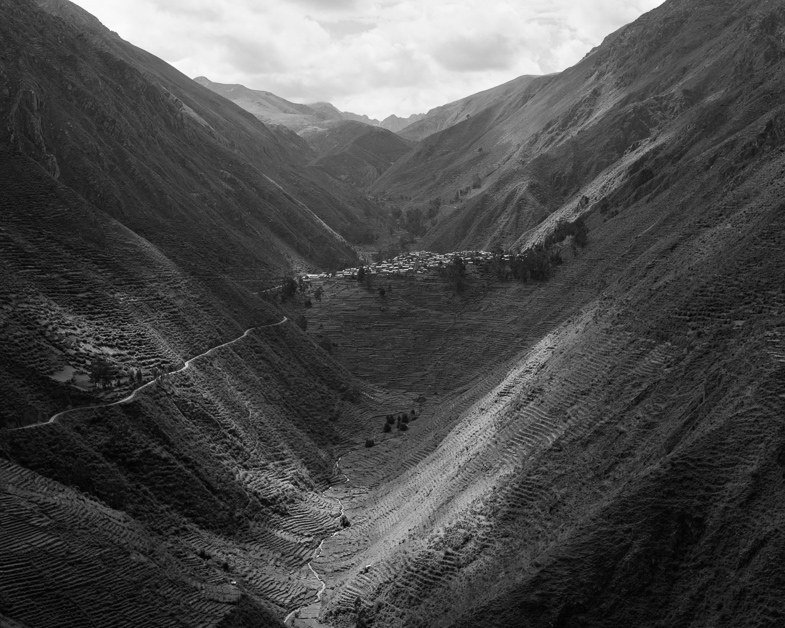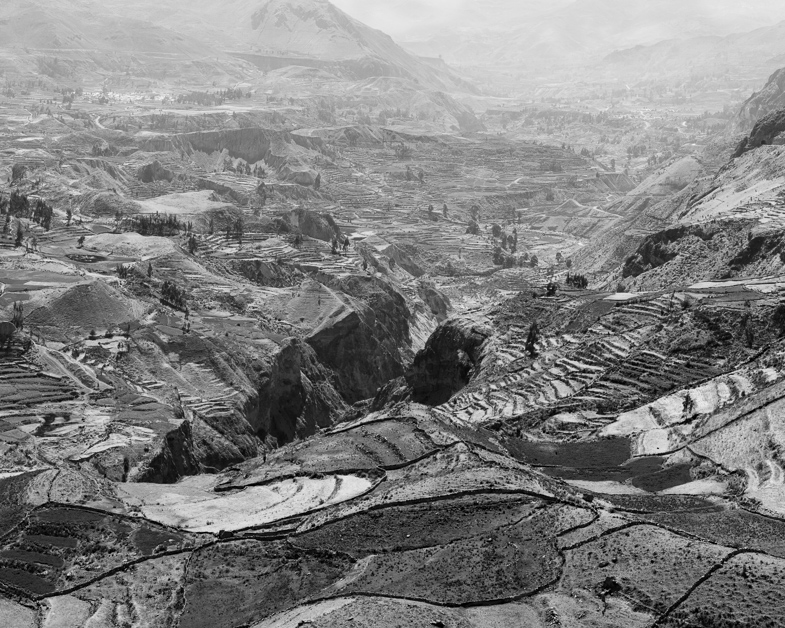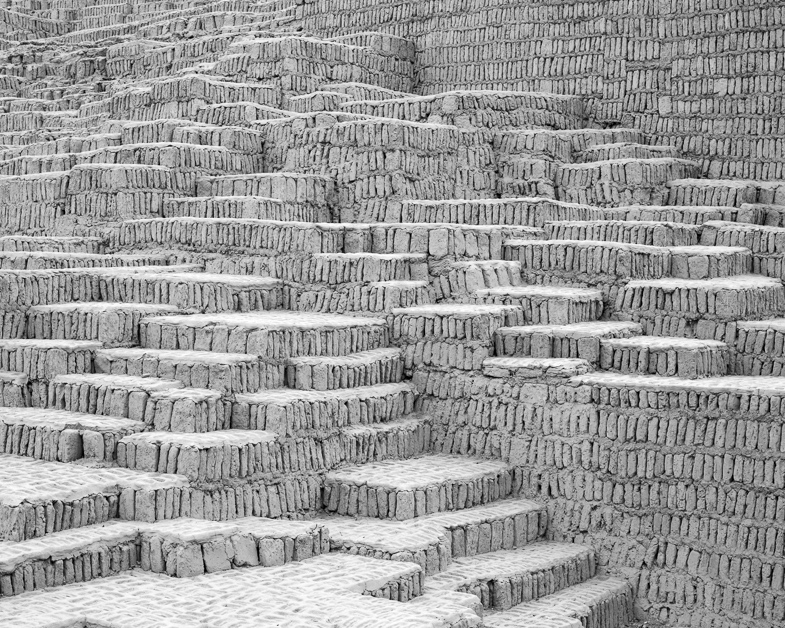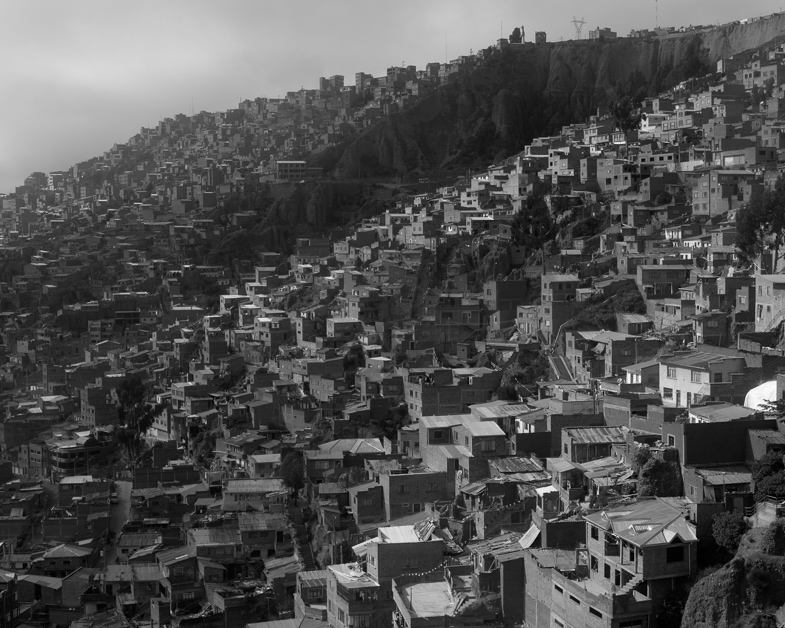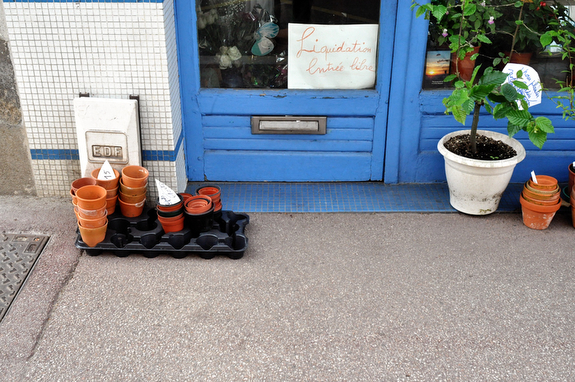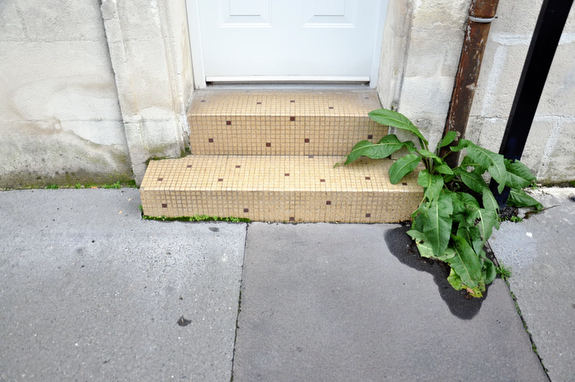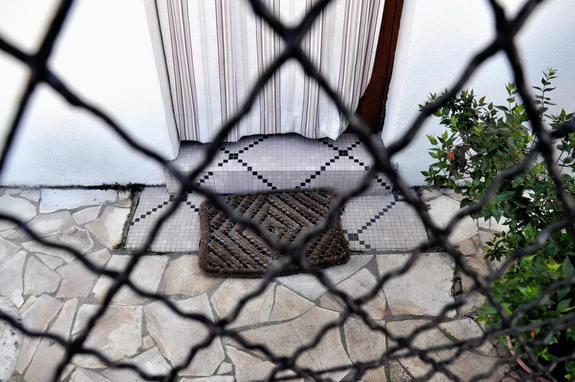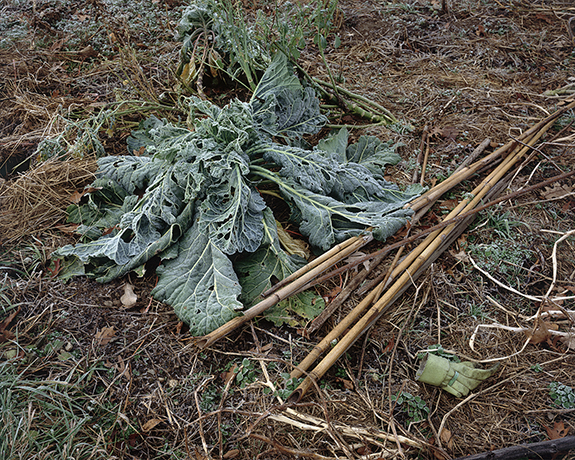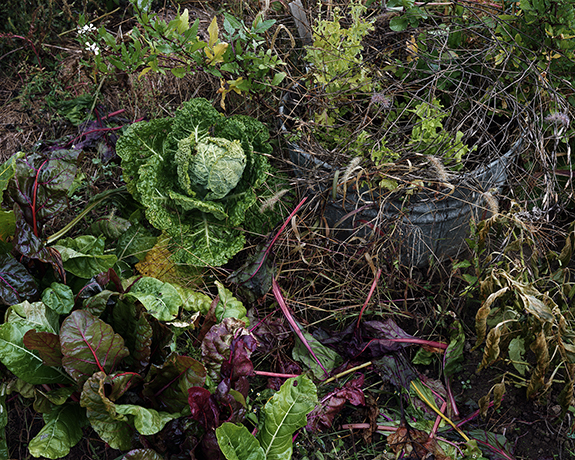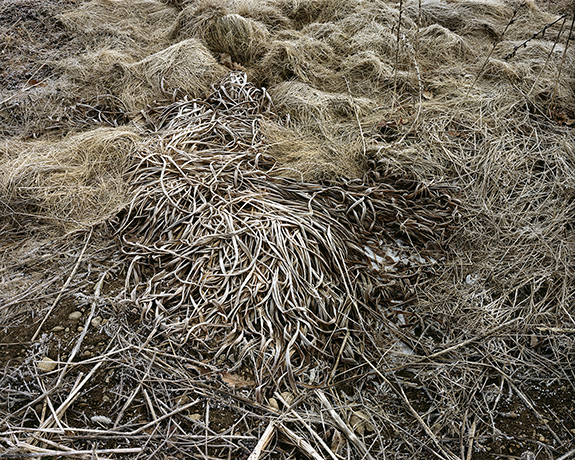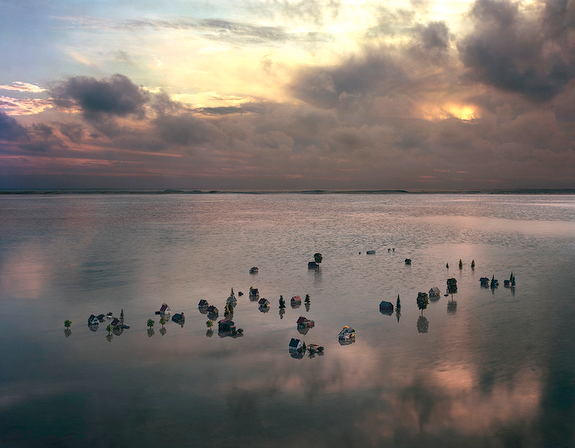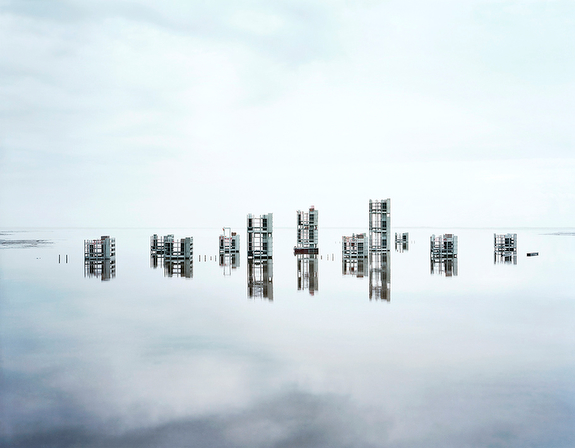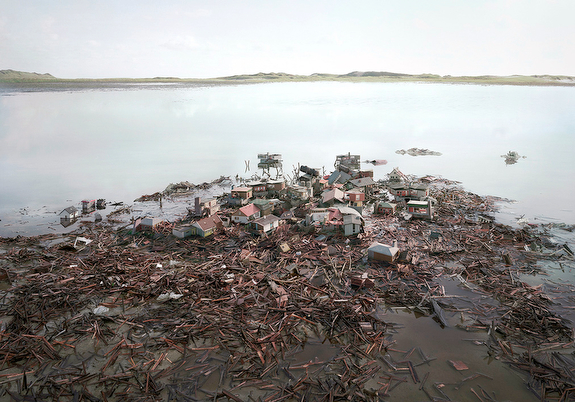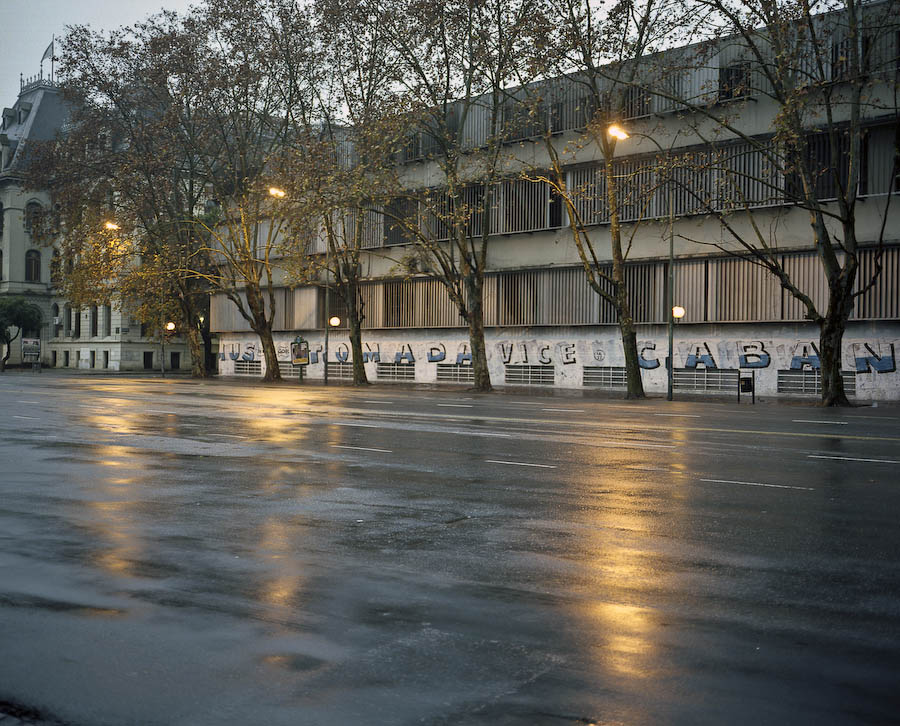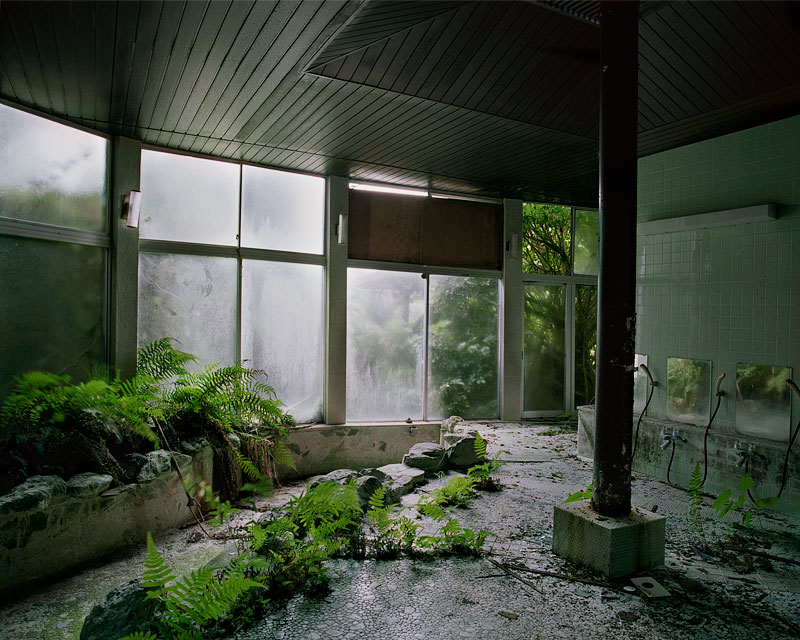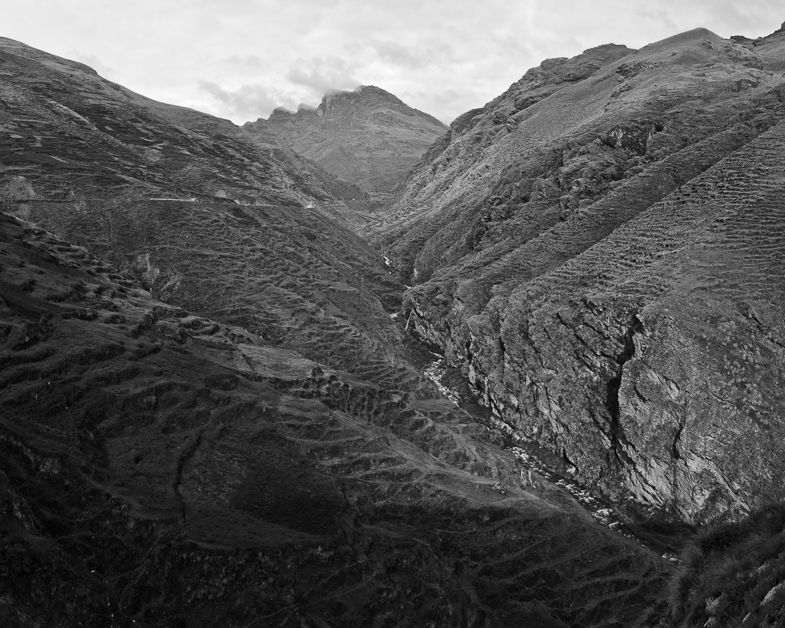
A thousand years ago the inhabitants of the mountain valleys of the Andes painstakingly transformed the landscape, sculpting terraces out of the mountainsides and turning marginal land into productive fields. The population boomed and the surplus from these crops formed the economic basis of the Wari and Inca empires.
Since the turn of the 20th century, a vast migration from the countryside to the cities has taken place. Small capitals have transformed into metropoles. The settlements of these new inhabitants sprawl into the hills and nearby mountains.
Mountain fields like stairways of stone is a handmade artist book with black and white photographs exploring these landscapes; the ancient rural and the modern urban. The book draws visual parallels between the practice of hillside crop terracing and the more recent phenomenon of massive and informal urban development. I am interested in exploring both the continuities and disruptions in human alternations to the landscape as written on the land in South America.
— Thomas Locke Hobbs, Los Angeles
